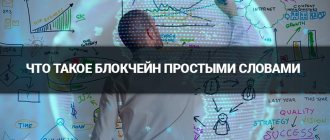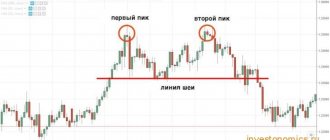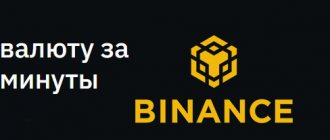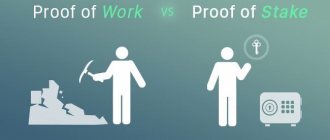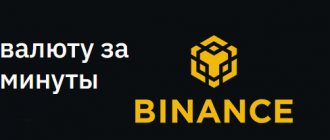What do the presidential elections and buying shoes in a store have in common? Both can be done on the blockchain. We tell you who in Russia is already actively using this technology.
Blockchain technology, which only computer geeks and cryptography fans knew about 10 years ago, is now being applied to all areas of life. According to the vice-president of the Russian Association of Cryptocurrency and Blockchain (RACIB) Valery Retrov, another 10 years will pass, and the blockchain will be as commonplace as the Internet.
This technology is already being used by such top companies as Microsoft, Oracle, PayPal, Saudi Aramco, Visa, Walmart, Louis Vuitton, Christian Dior, and the cost of blockchain development is approaching $6.6 billion per year.
Business in Russia is also not lagging behind. In addition to Norilsk Nickel, which was included in Forbes’ global blockchain ranking this year, dozens of Russian companies are studying or developing blockchain solutions.
Our list includes five largest companies from different industries that have already implemented this technology.
Sberbank
Industry : financial services and investments.
Description : the main bank of the country and the largest private company in Russia with a capitalization of 7 trillion rubles.
Blockchain platform : Hyperledger Fabric.
Why do we need blockchain : Sberbank wants to transfer core banking processes to blockchain. The Sber Blockchain Laboratory is developing projects for mortgage lending, factoring, insurance and letters of credit.
“Blockchain can significantly change many areas of business related to the financial market, to the classical activities of the bank and our clients ,” - Senior Vice President of Sberbank, Head of Sberbank CIB Igor Bulantsev.
Sergey Lonshakov
Sergey Lonshakov is a developer of drones controlled by smart contracts at ITMO, founder of Airalab.
The Drone-Employee project, which Sergei is currently working on, is developing technology that will allow a person to hire drones to carry out contracts - for example, delivering a purchase from a store. The process of concluding a contract will be automated: the drone itself will process the order and accept payment for the services itself, without the participation of people.
“You will hear about Ethereum almost everywhere. It's quite simple: they made a real innovation. I've been working with blockchain since 2011, when Bitcoin and a couple of other cryptocurrencies based on the same code were on the market. There were various projects, but none did anything revolutionary. Then Ethereum came. Its developers figured out how to implement a “smart contract” in the blockchain and make it secure.
When we started thinking about how to connect the Internet of Things and the financial segment, we realized that drones are a technological hype today, because they are a solution to specific problems of the near future. We are developing a layer that connects drones with the blockchain.”
National Settlement Depository (NSD)
Industry : financial services, investments.
Description : The company is part of the Moscow Exchange group, serves the securities market in Russia, helps the Russian financial sector integrate into the international ecosystem.
Blockchain platform : Hyperledger Fabric.
Why blockchain is needed: NDR is introducing blockchain into the financial infrastructure. The company is most interested in transactions with securities, as well as accounting and documentation on the blockchain.
“The task of NSD is to develop the financial market and offer services and technological solutions that are in demand by its participants. The implementation of blockchain in some cases makes it possible to simplify the architecture of systems and offer a cheaper solution compared to centralized options. The emergence of new types of digital assets can also stimulate the implementation of distributed registry technology to ensure market transparency for regulators and protect the rights of investors” - Artem Duvanov, Director of Innovation at NSD.
Types of blockchain networks
Blockchain platforms can be divided into the following types:
- Public platforms. They are completely open, transparent, and any user has access to them and the information posted on them. Managed by members who have equal rights. Safe – protection is carried out by cryptographic encryption, information is stored on users’ computers. The platform is supported by users, developers, service providers, and miners. The disadvantages include increased resource intensity and the required high computing power when exchanging large volumes of data, which the blockchain network cannot always provide.
- Private platforms. They are distinguished by centralized control over the ability of new users to access. The advantage is higher performance, less computational resources, and ease of integration with other information systems. In this regard, they are convenient for corporate use.
- Permission platforms. They are public networks, access to which is subject to a number of restrictions. A pre-established limited circle of people coordinates access to the platform for new users, determines the level of access, and has the right to make changes to the register.
- Hybrid platforms. They combine the properties of public, private, and permission networks. They are used within private systems, but they are managed by a group of independent organizations.
When choosing a platform, you need to decide what functions it will be used for.
Norilsk Nickel
Industry : mining and metallurgy Norilsk Nickel is the world's largest producer of nickel and palladium. The company ranks sixth in the Forbes ranking of large companies and fourth in terms of capitalization in Russia.
Blockchain platform : Hyperledger Fabric
Why blockchain is needed : Norilsk Nickel wants to simplify the trading of raw materials using the blockchain. The company issues tokens backed by palladium, cobalt and copper and sells them to producers. In addition, Norilsk Nickel keeps records of mineral resources on the blockchain.
“We believe that the digital technologies of the RSBN blockchain network and the Atomyze platform will help Norilsk Nickel and its partners move to a circular economy and track the movement of raw materials almost in real time without heavy paperwork ,” Vice President, Head of Sales and Commerce. Nornickel" Anton Berlin.
Where and by whom is it used?
In the Russian Federation, blockchain is used by government agencies, innovative enterprises, and banks. With the help of this relatively young technology, the state and business have the opportunity to significantly reduce costs, service time, and companies can simplify the control of internal processes. Blockchain helps:
- make payments online;
- quickly check the relevance of information about a client or transaction;
- register transactions;
- keep a register of them;
- protect databases from illegal transactions, fraudulent schemes, breakdowns, etc.
This reduces the risk of human error and eliminates the need for intermediaries.
The technology is relevant not only in the field of finance, but also in medical, educational, logistics, legal, information, scientific spheres, in business, in government administration, in the areas of wholesale non-core trade, manufacturing, IT technologies, etc. According to Wikipedia, at the end of 2022, the leading sectors of the Russian economy that successfully use blockchain are energy, finance, logistics, mining and manufacturing.
Gazprom Neft
Industry : oil industry.
Description : The company produces and processes oil and gas. The company is one of the three largest oil producing companies in Russia.
Blockchain platform : Hyperledger.
Why do we need a blockchain : Gazprom Neft is interested in logistics and fuel sales on the blockchain. The company uses this technology to track the movement of cargo. In addition, Gazprom Neft has developed its own Smart Fuel blockchain system for aviation refueling.
Evgeny Shumilov
Evgeniy Shumilov is co-founder and CEO of Emercoin. Came into the world of cryptotechnology when Bitcoin was just beginning to attract public attention.
Together with his team, Evgeniy launched the Emercoin blockchain in 2013, which implements analogues of blockchain-based network infrastructure services (EMCDNS, EMCSSH, EMCSSL and others).
For more than two years, the project developed “in the shadows”, and the EMC token was not listed on the exchanges. Now Emercoin is one of the most famous Russian cryptocurrency projects, which is in partnership with leading technology companies such as Microsoft, RedHat and others.
“Blockchain is a large database hosted on the network and accessible to a huge number of users. It is with the consent of the latter that all data is entered into the database. Once recorded, information cannot be changed or erased. This system allows you to store money and important documents, track transactions and operations, and also make money transactions independently, without intermediaries.
A transparent safe, an eternal book, a recorder of a new era... There are many metaphors - the essence is the same. Blockchain is a reliable way to store data about deals, contracts, transactions, everything that needs to be recorded and verified. Information is not stored in one place, but is distributed over a network among hundreds of computers. Every user of this network can see the entered data. But only the owner can change or delete them.”
Stepan Gershuni
Stepan Gershuni is an entrepreneur, crypto enthusiast and blockchain evangelist with extensive consulting experience for the largest organizations in Russia and the USA. BitFury employee, co-founder of the Block Notary blockchain service.
“Bitcoin is the first example of a new form of life. He lives, breathes and exists on the Internet. He is alive because he can pay people to keep him alive. He is alive because he knows how to provide people with useful services for which people pay him. It's alive because anyone, anywhere can run a copy of its code. He is alive because these copies are constantly communicating with each other. It lives because as soon as one of the copies is damaged or incorrect, it is immediately ignored without any delay. It lives because it is radically transparent: anyone can see the code and the exact progress of its execution.
It cannot be changed. It cannot be disputed. It cannot be damaged or replaced. He can't be stopped. It can't even be interrupted.
The only way to turn it off is to destroy every computer on which it is running."
JavaScript
GitHub has recently positioned JavaScript as the most common language for developers - 95% of sites use it in one way or another. Be that as it may, JavaScript is not only the ruler of web promotion; The adaptable programming language is additionally widely used to improve blockchain.
One of the reasons blockchain developers hold JavaScript in high esteem is a direct result of the way it handles non-standard code. This is important for blockchain because thousands of transactions can be run simultaneously. Unusual concurrent programming allows a program to perform multiple actions continuously. Standard synchronous programming simply cannot handle this volume. By running multiple double custom code actions, you can improve programming response time and application execution. This allows blockchain projects to handle enormous volumes of transactions without disrupting operations or disappointing customers.
History of Blockchain
Blockchain was first used in the Bitcoin system, invented in 2008, although the first developments appeared 17 years earlier. The authorship of the original idea is attributed to W. S. Stornett and S. Haber, who in 1991 experimented with storing files on a cryptographic blockchain and also tried to combine these files into blocks.
However, until 2008 the invention did not attract much interest. So it was Satoshi Nakamoto, who created Bitcoin, who pushed the technology to active development, and then a lot of other programmers picked it up.
Solidity
Solidity is a sophisticated contract and blockchain enhancement language that is widely used by Ethereum developers. It uses a significant number of JavaScript-indistinguishable standards and punctuation to create high-quality decentralized applications.
Engineers are drawn to the language because it allows them to write high-level code for the Ethereum blockchain, the second most popular blockchain digital currency, that can be compiled into low-level machine code. In addition, Solidity allows the use of advanced Ethereum exchange records to establish agreements between organizations. The agreement language uses invariants, preconditions, and postconditions to simplify the promotion process and the process of determining the term of the agreement for clients.
Solidity is currently available on several blockchains, including Ethereum, Ethereum Great, Tendermint, and Counterparty. It is used for a variety of purposes, including business contracts, barter, crowdfunding, and that's just the beginning.
Payment transactions in mining
There would be no practical point in mining if the cryptocurrency could not be withdrawn and exchanged for another currency. And the blockchain would not be reliable if all transactions, including cryptocurrency transfers, were not secure.
To protect transactions, two keys are used: public and private.
Source: club.dns-shop.ru
Public key
A public key is a cryptocurrency wallet address. The key consists of a set of numbers and letters (from 26 to 35 characters), the set is unique for each wallet. A public key is generated based on the private one. It can be found in the wallet settings. The key can also be provided in the form of a QR code. The public key is open, that is, all users can track transactions of a specific wallet.
The main purpose of the public key is to indicate the direction (address) for transferring cryptocurrency (bitcoins). It is also used, together with the private key, to verify that an address belongs to a specific person.
Private key
A private or private key is also a set of symbols, a cryptogram that provides access to a wallet. And only the owner of the wallet should know it. Also, the private key functions as a kind of electronic signature when conducting transactions.
It is impossible to select a private key using brute force or guess it. This guarantees high security of the cryptocurrency wallet, but there is a drawback. If the wallet owner has lost the private key (forgot, for example), access to the wallet cannot be restored in any way. No one.
Stellar (XLM)
https://www.stellar.org/
Having transformed the protocol that was previously used to create Ripple, the project developers introduced a new interface called Stellar. The source code, which is not new, is open. When the project was launched, the currency was of the same name, but after some time the developers decided to change the name to Lumen. This is a rather rare situation in the modern blockchain project market. According to analysts, such a decision could threaten the company with loss of marketing promotion results.
Funding for the project is almost entirely provided by the American economic solutions company Stripe. Initially, the currency was supported by funds from the independent Stellar Development Foundation, and only after the creation of the organizational structure did the project have a third-party investor.
The cost of one token is about 6 rubles. The capitalization of the entire project exceeds 16 billion rubles.
What's special?
The project works with smart contracts that have multi-signatures, time limits on transactions and their atomicity. The transaction confirmation speed is achieved in a maximum of 5 seconds (which is considered an excellent indicator). A user who is familiar with the functionality of the system has the ability to quickly carry out several microtransactions.
Stellar attracts financial giants from the economic sphere of various countries primarily due to the increased compatibility of the system with any financial market. Now the startup, which has become a start in life for several dozen programmers, cooperates with at least Deloitte and the monopolist in its field, IBM.
IOTA
https://www.iota.org/
The project, founded 4 years ago, offers cryptocurrency for the Internet of Things. According to the developers, the purpose of creating IOTA was the development of blockchain technologies within the Internet of Things for the successful use of cryptocurrency in this niche. In 2022, two years after its launch, the project became a participant in the data market using the original IOTA technologies.
What's special?
Transactions within the network are free, the system scales quickly, which makes it considered a very promising area of development. Now the project is completely controlled by the fund of the same name, which is interested in the gradual development of blockchain technology and its implementation in the already existing Internet of Things.
EOS (EOSIO)
https://eos.io/
This platform operates under the MIT license. The project allows you to create blockchain applications on its basis. Block.one, the developer of the project, offers computing resources to third-party individuals. Computing resource quotas are distributed within the smart contract system through token staking or currency-related voting.
Now the system, despite the increased interest in its work and the large number of developers involved in the project, is officially at the “early access” stage. There is a risk of losing investor interest in the project. In addition, the founders of the company do not limit the influx of third-party funds for its financing, which can lead to a revaluation of the currency.
What's special?
The operating system offers solutions for creating applications and authentication. Therefore, businesses collaborating with this project transfer almost all processes related to blockchain technology to the company. Interestingly, to increase loyalty, the creators waived the user commission.
Rust
The newest blockchain programming language at the moment.
Rust strives to provide open source blockchain developers with the ability to create fast and efficient blockchain systems. We've found that Rust is exceptionally good when it comes to CPU-intensive tasks. You can use a functional or imperative approach with Rust to develop your blockchain. It is one of the best programming languages for blockchain due to its high-performance mutable state processing mechanism.
The Rust compiler provides impressive optimizations for your blockchain. The fast, memory-safe, and highly parallel nature of this blockchain coding language makes it most suitable for developing real-world blockchains.
PHP
Although it is no longer suitable for the modern web, PHP still covers most web systems. It can also be used to build simple and complex blockchain systems, thanks to its object-oriented features and large, active open source community.
If you are new to programming and want to try your hand at blockchain coding, PHP may be the best option for you. A significant number of PHP developers guarantee a ready workforce if you develop something high-end and decide to go corporate.
Cardano (ADA)
https://www.cardano.org
The project was fully launched two years ago, and Cardano has remained in the same place in world rankings for a year now. In general, the software aims to create sidechains, multi-party computing, smart contracts and decentralized applications.
The developers are Input Output Hong Kong and Charles Hoskinson, who during his career managed to co-found Ethereum, Ethereum Classic and other cryptocurrencies. The project team now claims that Cardano has the potential to significantly change the existing cryptocurrency market. The technology used, according to the top management, is “ideal” for circulation within the financial system.
Now the project capitalization is just over two billion dollars. At the same time, the cost of the token has remained at the same level for several months in a row and is approximately $0.07.
What's special?
The project’s cryptocurrency runs on CSL - its own blockchain consists of two layers, the first of which directly supports operations with wallets, and the second is a “layer” for applications and smart contracts. According to the creators, this can significantly simplify the work of users (including commercial, that is, legal entities) with currency. The currency uses a programming language with an increased degree of fault tolerance.
Chainalysis
https://www.chainalysis.com/
The company monitors blockchain projects and cryptocurrency exchanges, investigating situations of money laundering and fraudulent activities. It was created in 2014 and since the start of its active work has attracted the attention of US government ministries and Europol. Last year, the creators of the project earned more than a million dollars.
What's special?
The project is currently collaborating with the FBI, helping to identify cases of fraud and stop illegal transactions. Thanks to the company’s services, details of the creation of the Silk Road trading platform, the actions that led to the bankruptcy of the Mt.Gox exchange, and methods for withdrawing funds from users’ cryptocurrency wallets were revealed.
Thanks to the project, it has become possible to track the payment of taxes by traders - despite the fact that this is a disclosure of anonymity, the service is used by most economic ministries in America.
Dima Starodubtsev
Dima Starodubtsev is a blockchain evangelist, co-founder of cyber.fund and GOLOS. He believes in the global victory of decentralized technologies and is able to convert even a convinced skeptic. One of the most prominent representatives of the Russian cryptocurrency community. Guest and speaker at many specialized events.
“The main idea of VOICE is to allow people to do everything they do on Facebook, Instagram, Twitter: write articles, like, comment and get paid for it. This model works very well (on a relatively small scale) for English-speaking users using Steem as an example. We just want to take what we have and give it to the Russian guys. At the same time, we ourselves will touch the technology on which the platform is written.
After the launch of Voice, we will experiment with virtual reality: so that we can perform some actions with the power of thought. For example, conduct the first Bitcoin transaction. Dream: transfer Bitcoin with the power of thought and see it. Wear Oculus glasses or whatever comes to hand.”
Celsius Network (CEL)
https://celsius.network/
The project deals with transactions with cryptocurrencies in the banking sector. The lending platform, based on the company’s technologies and blockchain, allows developers to receive up to 5% profit for their own cryptocurrency. Users can take out a loan at 9% per annum; in this case, the cryptocurrency wallet will become the collateral. The cost of one CEL token now does not exceed five rubles.
What's special?
The company is unique in its technology for issuing loans, in which cryptocurrency plays a predominant role. The project developers say their goal for the coming years is to attract more than one hundred million people to use cryptocurrencies. Thus, the company can completely replace existing offline credit organizations.

